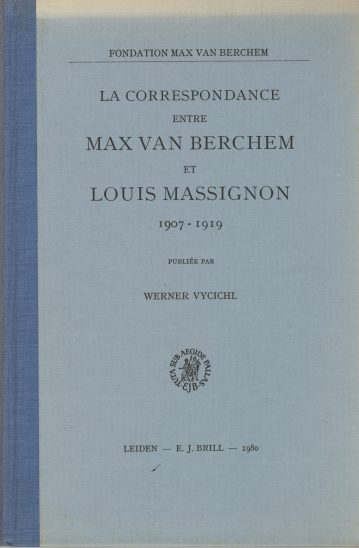La Correspondance entre Max van Berchem et Louis Massignon, 1907-1919.
Vycichl, Werner.
Synopsis
Max van Berchem (1863 – 1921) was a Swiss epigraphist and historian. Best known as a pioneer of Arabic epigraphy, he created “Corpus Inscriptionum Arabicarum”, an impressive collection of Arabic inscriptions. After graduation, he embarked on scientific expeditions to Egypt (several trips from 1887 to 1890), Jerusalem and Palestine (1888, 1893 and 1914), and Syria (1884, 1895). On these journeys he studied and collected a vast amount of Arabic inscriptions (“Matériaux pour un Corpus Inscriptionum Arabicarum”). Being aware of the enormity of this project, he divided the work amongst others, mostly French and German scholars, with Berchem, for the most part, limiting his personal investigations to the cities of Cairo, Jerusalem and Damascus. In his work, he used photography as a means to record Arabic inscriptions. Between 1895 and 1914, he dedicated most of his time and energy towards the publication of the large amount of textual material that he had accumulated.[2]
Louis Massignon was a French scholar, who wrote some of the most influential works on Islamic studies of the 20th century. Massignon had an especially keen interest in the Sufi mystic of the 9th century Baghdad, Hallaj (Husayn ibn Mansur al-Hallaj). In 1907, he was sent on an archaeological mission to Mesopotamia. In Baghdad he was the guest of the great Muslim family of the Alusi, who introduced him to the kind of Arab hospitality he was to honour throughout his life.






